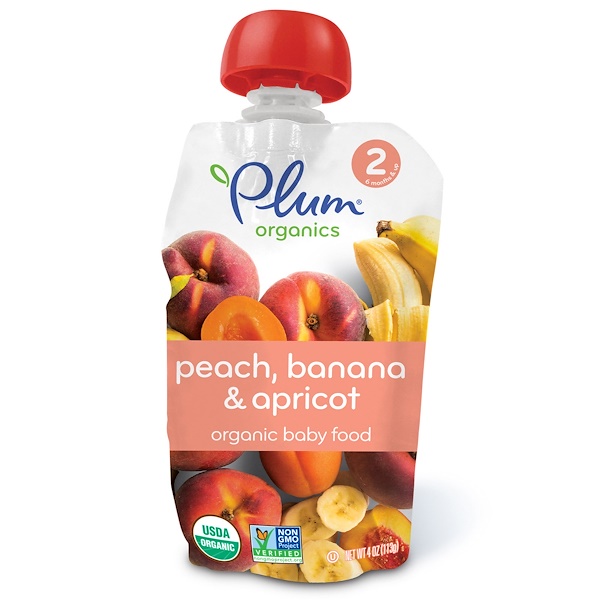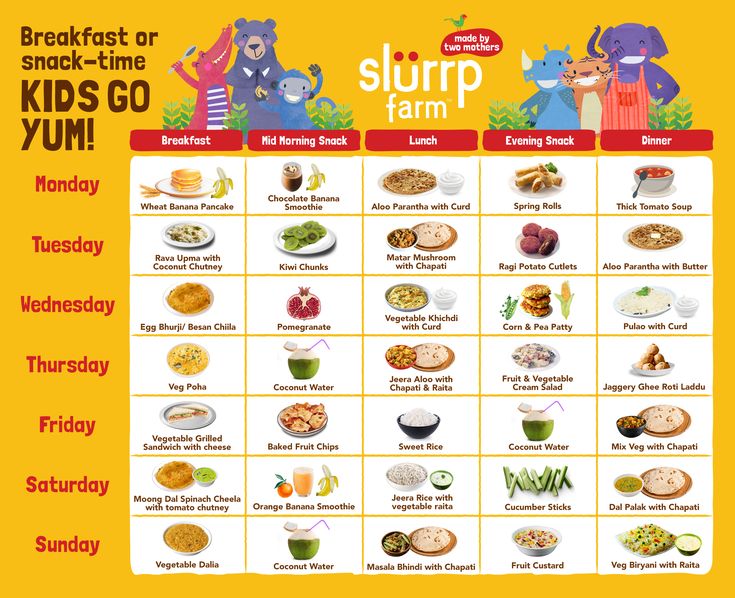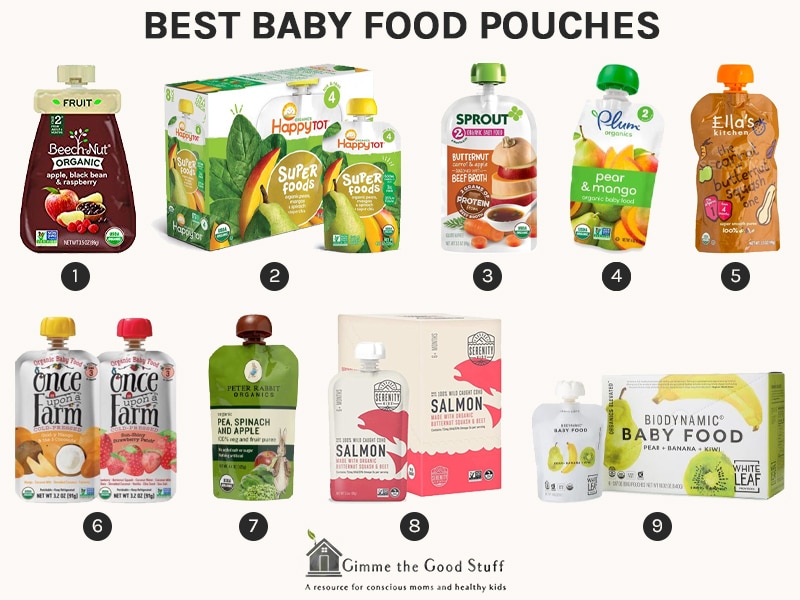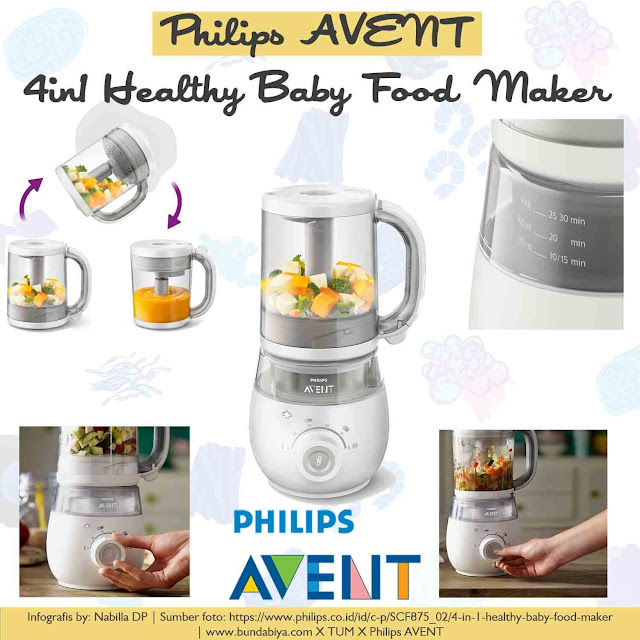Good food for teething baby
Five Teething Foods That Soothe
This month my third child reached a milestone. Her first tooth appeared. Third time around I am more prepared for teething. Third time around I know what to expect. Not everyone has the benefit of past experience when it comes to teething so I thought I would share some of the practical things I have learnt along the way.
Not every teething experience is the same.
Some babies never bat an eye lid, and show absolutely no signs they are teething. One day they have no teeth, then the next, you notice a pearly white has sprouted from their gum. Mums of these kids can often be a bit smug when it comes to teething. I confess to being one of these mums at the start.
Some babies struggle with every single tooth, they are miserable for a few days leading up to it, and usually sleep poorly on the nights the teeth actually cut. These kids have red cheeks, chew everything in sight and are just plain irritable. Mums of these kids wish all their child's teeth would arrive on one day so that it could be all over and done with. I was this mum with mu second when her first few teeth arrived.
Some babies are a mixed bag. Sometimes they just magically appear then other times they appear to be quite painful. Mums of these kids find it hard to know if teething is the reason for their munchkins grumbles or if other things are at play. Mixed bag kids can be hard as like the famous line from Forrest Gump "you never know, what you're going to get'. It turns out that ultimately my kids have been mixed bag, or should I say 'box of chocolates' kids. I suspect this is probably the case for the majority of babies. So if you think teething is a breeze, I hope it remains that way for you. If it doesn't and your placid poppet becomes irrationally irritable with a future teething experience, then rest assured you are not alone!
Case and point: My kids
Kiddliwink One: Breezed through the first stages of teething, his first 8 just arrived no issues. His first set of molars no problems. Canines however were a disaster, he was grumpy, red cheeked, off his food and slept poorly until they came through. I was sleep deprived, grumpy and a bit more arse-holey than I typically like to be.
I was sleep deprived, grumpy and a bit more arse-holey than I typically like to be.
Kiddliwink Two: The complete opposite to the first. Struggled with the first four, showed obvious signs of teething, red cheeks, swollen gums, chewed everything and woke beside herself on the nights they actually cut. She is currently getting her molars and canines at the same time and you wouldn't even be able to tell.
Kiddiwink Three: Her first tooth has just arrived. She has shown absolutely no signs. Apart from one night of absolutely terrible sleep. I had no idea what the problem was until the next morning I noticed a tooth had broken through. Then I felt terrible as I hadn't even considered teething as the reason she was awake in the middle of the night.
Below is a chart showing usual times when teeth can make their appearance.
As with everything the range of normal is quite large and even then there can be kids who can sit outside the 'usual' range. Some kids are hares when it comes to getting teeth and some kids are tortoises.
Some kids are hares when it comes to getting teeth and some kids are tortoises.
Case and point: My kids
My first two kiddlwinks fell into the slow and steady wins the race camp.
Kid 1: No teeth until 10mths old (He had all of them by the time he was 2.5yrs though).
Kid 2: Is proving to be an absolute tortoise. First tooth at 14 months. She will be 2 years old in a weeks time, and up until a few weeks ago still only had four teeth. She is catching up now, with a mouth full of erupting teeth.
Kid 3: Her first tooth arrived at 6 months, and as of yesterday number 2 is here as well. So a hare compared to the others, but right on schedule compared to the chart.
I know a munchkin who cut their first tooth at 2 months and even one who had a tooth at birth.
If you have any concerns about your child's teething then ask a Healthcare Professional. In NZ there is a free public dental service until your baby's 18th birthday.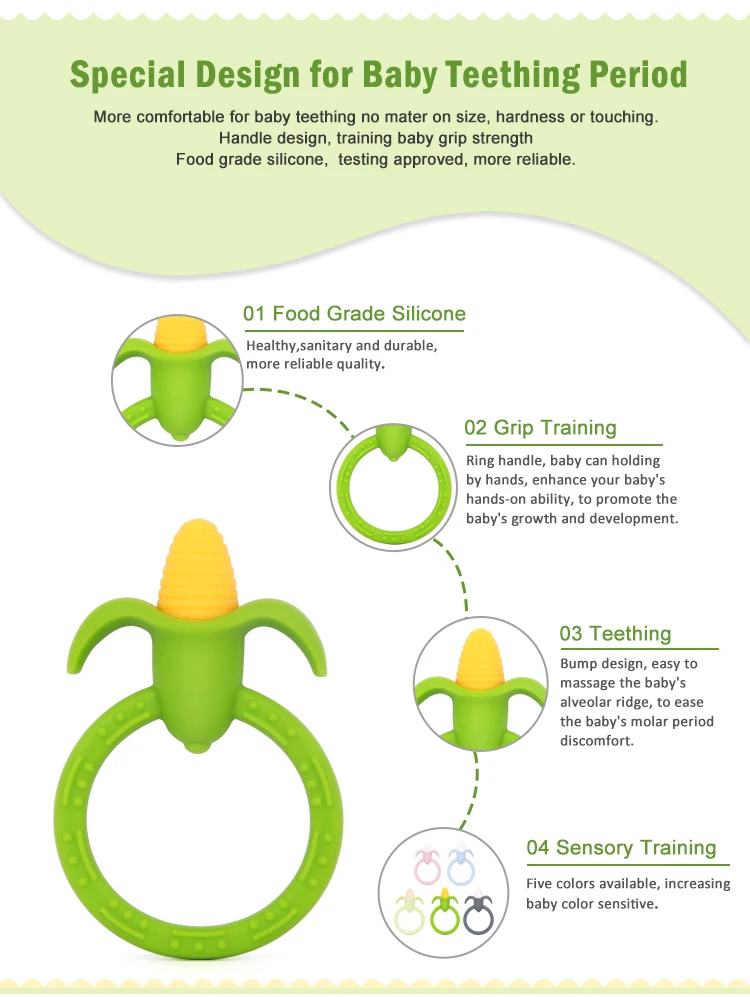 If you have any concerns about your baby/childs teeth (or lack of them) then this is a good place to start. Just call 0800 TALK TEETH (0800 825 583).
If you have any concerns about your baby/childs teeth (or lack of them) then this is a good place to start. Just call 0800 TALK TEETH (0800 825 583).
One thing I do know, whether you have a hare or tortoise, getting teeth changes a kids smile. So make sure you have some great pics of your baby's gummy grin as it doesn't last forever! A smile with teeth is also adorable, just different, so snap away as your childs smile changes over their first few years.
As I mentioned above not every teething experience is the same. There are differences from baby to baby and from tooth to tooth. Some kids will breeze through, others, I honestly do believe find it quite painful. Let me put a qualification on this though. I do believe teething can be painful for some kids, for some teeth. However, honestly now that I know what I do about young kids. If your munchkin is out of sorts and has been out of sorts for a long period of time. It is probably not teeth solely causing the issue. Babies and toddlers get out of sorts for all sorts of reasons. Being a baby and toddler is tough going. So many milestones and concepts to wrap their little heads around. So yes I believe it can be painful, and yes I believe it can upset sleep. A few day/weeks here and there, But not for weeks on end.
Babies and toddlers get out of sorts for all sorts of reasons. Being a baby and toddler is tough going. So many milestones and concepts to wrap their little heads around. So yes I believe it can be painful, and yes I believe it can upset sleep. A few day/weeks here and there, But not for weeks on end.
Case and point: My kids
My eldest was a late teether but an early talker. When his canines arrived at around 2yrs of age, not only did he display symptoms, swollen gums, red cheeks, drooling and restless nights. He could also tell me. He would tell me his teeth were sore. He would refuse to eat crunchy foods like apple and carrot sticks as 'they hurt'.
My middle child is a dream sleeper. Honestly she looks at a bed and falls asleep. When her first few teeth arrived she would wake beside herself and would take hours to resettle. This would last for a few days each time a tooth erupted. She was clearly finding teething painful.
Easing the pain
During the day I believe there are quite a few things you can try to help a baby/child deal with sore gums/teeth. Below are my 5 everyday foods that can ease the pain, or at least distract from it.
Below are my 5 everyday foods that can ease the pain, or at least distract from it.
5 Regular foods to ease the pain, or at least distract from it
1. Watermelon
Amazing straight out of the fridge. Loved by kids. Don't cut the rind off, it is the perfect thing to gnaw on.
2. Cucumber
Either as rings or sticks, cold cucumber and teething kids you can't go wrong
3. Cruskits
Not exactly the most nutritious cracker out there, but so great for gummy sharks to suck, gnaw and generally just muck about with. They have the added benefit of being quite tidy, so a great option to give to an irritable kid in a pram, when you need to buy yourself a few more minutes grace before the grumbling really kicks in. There are quite a few varieties now; Original, Rice, Corn, Wholegrain to name a few. If you have an allergy kid, be mindful as they don't all contain the same ingredients. Some have added Milk or Soy where others don't. So check the label.
So check the label.
4. Frozen Blueberries
One of my favourite foods to come out of a packet. Kids love them, and they are the perfect distraction from teething. Be warned they are messy and can stain, so make sure you have a bib handy, or at least don't serve them when your munchkin is wearing their best outfit.
5. Ice
Lastly, but by no means least, good old, run of the mill ice. The only problem with ice is putting it in a form that is easy for your poppet to manage (particularly if they are teething at quite a young age). I use two different ways.
One is a fairly standard tried and tested method: Wet a muslin, Wring it out, Roll it up and freeze. Pure bliss for babies.
The second method, I like to think I was the first to create. I like to think it is a My Kids Lick The Bowl original idea. I suspect though that some other practical mum has been there and done that before me. But, in case they haven't, or at least in case you haven't come across them before, look below for instructions on making the ultimate Teething Pop.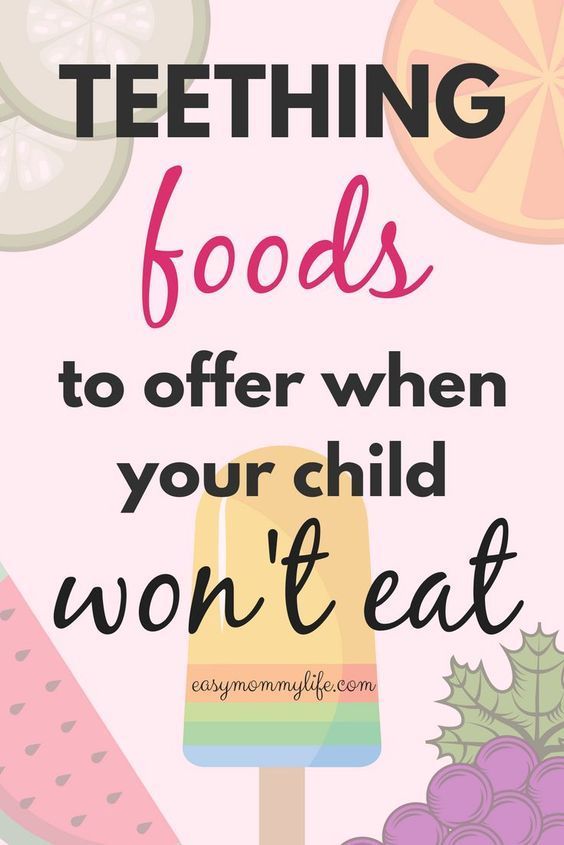 So practical in its's simplicity yet so clever in its originality. Or maybe not, either way they definitely work and babies love them, even grumpy babies with sore teeth.
So practical in its's simplicity yet so clever in its originality. Or maybe not, either way they definitely work and babies love them, even grumpy babies with sore teeth.
Pain medication
If these things don't work and my child remains in obvious discomfort then I am a believer in pain relief. I know not everyone is, but I am. Mums will have different comfort levels in regards to when they will consider pain relief for illness and teething. When it comes to pain relief in children I live by this philosophy.
A Pharmacist or Doctor will be able to give you expert advice when it comes to pain medications for your children. They should be your first point of call if you have any concerns.
Babies do not need teeth to start solids. Jeepers, if I had waited for my second child to have teeth before I started solids she would have been 14 months old!
Not having teeth shouldn't greatly affect the type of food you offer. You will be amazed at what a 'gummy shark' can manage, so don't use not having teeth as a reason for not moving kids through different food textures or starting them on finger foods.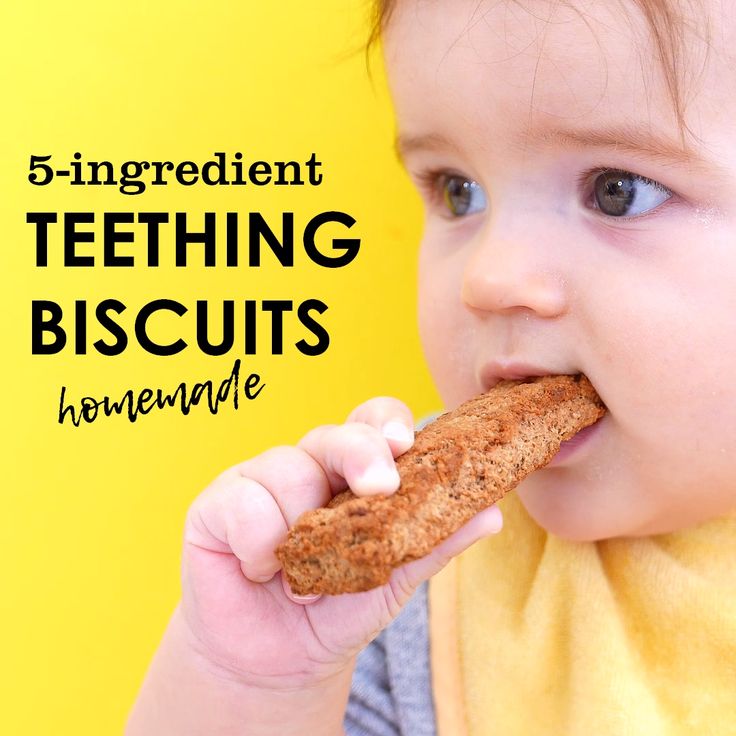 Be sensible though. A child with no molars will struggle with very hard foods like carrot sticks or nuts, as they will have no way of grinding them up. So sometimes an alternative is needed. Cucumber sticks are easier to manage than carrot, or lightly steam the carrot until their molars come in. Use nut butters for snack as an alternative to nuts.
Be sensible though. A child with no molars will struggle with very hard foods like carrot sticks or nuts, as they will have no way of grinding them up. So sometimes an alternative is needed. Cucumber sticks are easier to manage than carrot, or lightly steam the carrot until their molars come in. Use nut butters for snack as an alternative to nuts.
A baby clamping down on your nipple with just gums is painful enough. A baby clamping down on your nipple with teeth can make you scream bloody murder! Due to my first two kiddlywinks being late teethers I don't have a huge amount of experience. But a couple of practical tips I would suggest if you have a bub determined to chomp through your nipples:
Feed bub when genuinely hungry
I find cheeky bubs don't tend to bite down when they are hungry, it is something they do when they have full tummies and are just experimenting.
- If bub is not actively feeding and is just mucking about (I am sure you know what I mean) then pop them off the boob before they have a chance to bite.
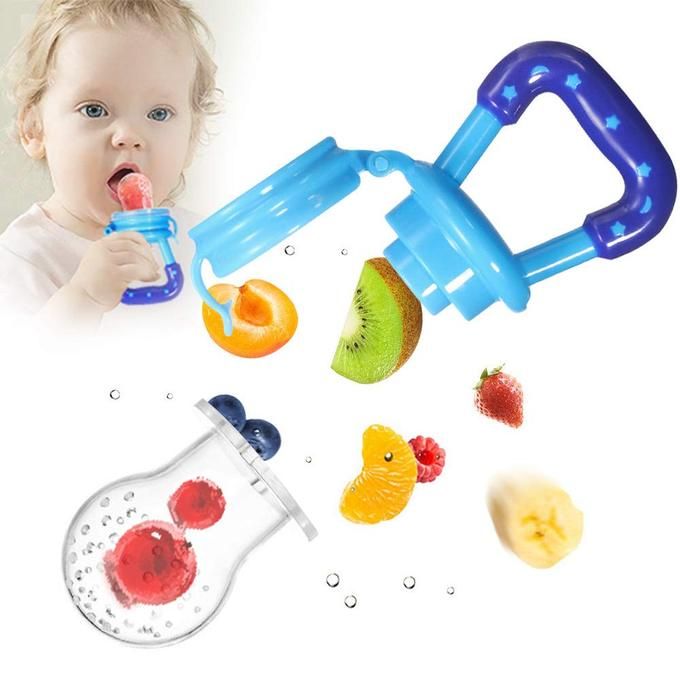
- If bub does bite you, pop them down i.e. feed is over! Re-offer the boob in 20-30 minutes, if they take it they were still hungry, if they don't then they weren't hungry and the bite was a painful game. If they bite again, pop them down and repeat as above.
It's usually a phase
For most it is a phase and if you stop the feed when they bite, they should stop doing it after a little while and you can go on with your breastfeeding journey. Or at least that is the theory!
So to sum up. Teething happens to every child. Eventually every baby will cut 20 pearly whites. Your bub may not be bothered at all, or it could be a bit of a troublesome time. Do what you need to do to get through. Whether that be by making my incredibly original but simply brilliant teething pops or by giving more traditional pain relief. The good news, is typically after a maximum of 3 years teething will be done and dusted.
On my website I have a teething biscuit recipe and a 1-minute baby rusk which my kids have all enjoyed when teething.
What Foods to Give as My Child Is Teething? | Healthy Eating
By Alicia Bodine Updated December 06, 2018
According to the American Dental Association, you can expect your baby's first teeth to erupt between 6 months and 1 year, with the full set of 20 primary teeth showing up by age 3. As the teeth make their way through the gums, your little one may experience soreness that leaves him irritable. Fortunately, in addition to teething rings, there are a few foods you can give your child that will help soothe the tender gums and relieve pain.
Teething Biscuits
In addition to relieving gum pain, chewing on teething biscuits is also a yummy snack for most babies. The biscuits can be cracker- or cookie-like and are designed to break up and dissolve easily to reduce choking risks. Of course, parents should still keep a close eye on their children as they munch on these crumbly foods.
The treat is available for purchase in grocery stores, but parents can make their own by blending 2 cups of oat flour, 1 ripe banana and 2 tablespoons of coconut oil.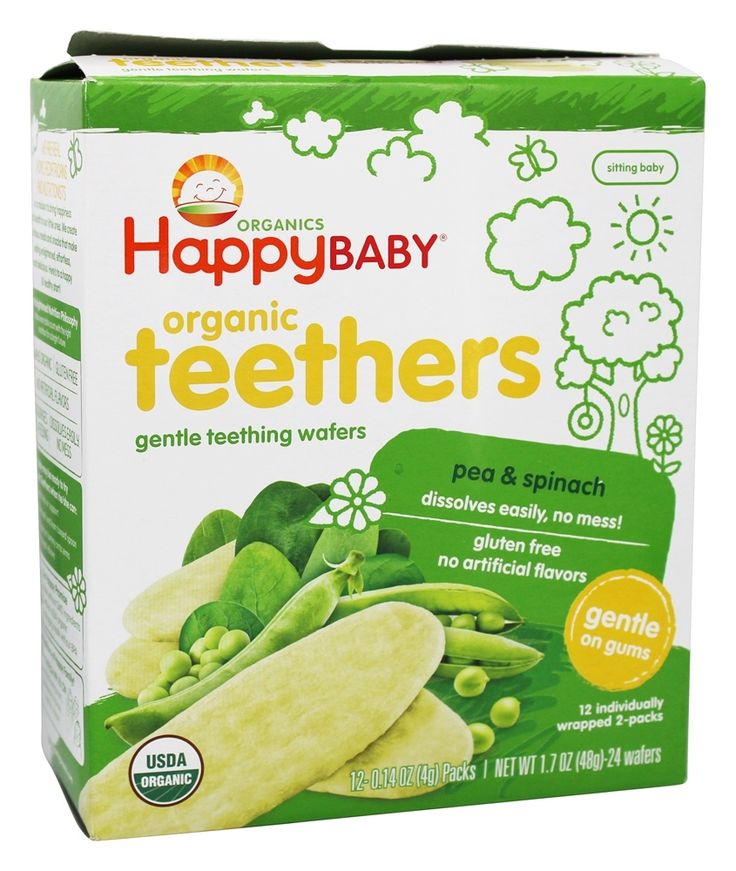 Mold the dough into cookie or stick shapes and bake at 350 degrees Fahrenheit for 10 minutes per side.
Mold the dough into cookie or stick shapes and bake at 350 degrees Fahrenheit for 10 minutes per side.
Hard Vegetables
Carrots, cucumbers, celery sticks and other hard vegetables that have been chilled in the refrigerator feel good against aching gums as your baby gnaws on them. It's important that the carrots and cucumbers be peeled first and that parents watch their toddlers closely in case a piece of the vegetable breaks off.
Popsicles or Fruit Slushies
Ice is excellent for numbing areas of our body that are in pain, so it makes sense that frozen ice in the form of popsicles and fruit slushies would give a baby relief from sore gums. You can also purchase popsicles and fruit slushies from your local grocery store or make your own at home.
Simply place your baby's favorite fruits in the freezer. Once they've frozen, toss them in the blender so they become fruit slushies that can be spoon-fed.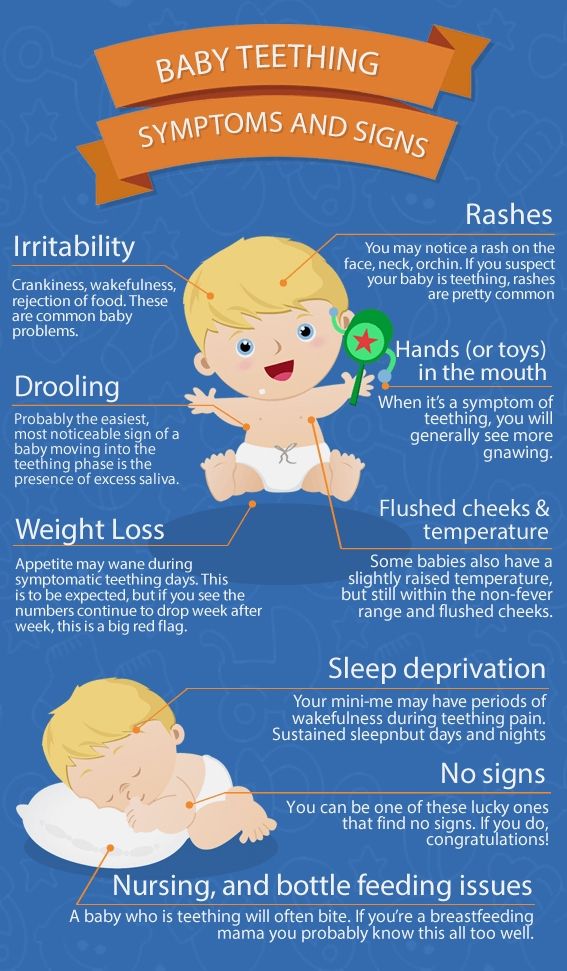 If you'd rather make popsicles, blend fresh fruits with a little water and then pour the mixture into popsicle molds. Place in the freezer and use once frozen.
If you'd rather make popsicles, blend fresh fruits with a little water and then pour the mixture into popsicle molds. Place in the freezer and use once frozen.
Applesauce, Yogurt and Pudding
Some babies prefer the texture of soft foods. In this case, you'll want to offer chilled applesauce, yogurt or pudding during snack time. The creamy foods won't irritate the already painful gums, and the cold temperature of the snacks will soothe the area. Pouring the applesauce, yogurt or pudding into a popsicle mold and serving it that way also works.
References- KidsHealth: Teething Tots
- MayoClinic.com: Teething: Tips for Soothing Sore Gums
- BabyCenter: Teething: Your Baby's First Teeth
- Super Healthy Kids: Healthy Homemade Teething Biscuits
- Mom Tricks: 27 Must-Know Tips to Quickly Soothe a Teething Baby
Alicia Bodine is a New Jersey-based writer specializing in health and nutrition. With more than 13 years of experience, her work has appeared in sites like Livestrong and eHow Food & Drink. She has also served as the Healthy Foods editor at BellaOnline.
With more than 13 years of experience, her work has appeared in sites like Livestrong and eHow Food & Drink. She has also served as the Healthy Foods editor at BellaOnline.
what to do if the teeth are climbing and the baby has a poor appetite
Published: 05/06/2022
Reading time: 2 min.
Number of reads: 60339
Author of the article: Ponomareva Yulia Vladimirovna
Pediatrician, Candidate of Medical Sciences, Allergist-Immunologist
The appearance of milk teeth in a baby is a difficult stage in the life of both a child and all family members. This is one of the most common causes of restlessness, moody behavior and poor appetite in an infant in the first year of life. Let's discuss how parents need to behave in order to help the baby get through this difficult period. nine0003
Contents: Hide
- Timing of teeth
- Changes in health
- Refusal to eat
- General rules
- Baby porridge
- Practical tips
Terms of appearance of teeth
The formation of teeth occurs in utero, that is, the baby is born already with a full set of teeth, which are then waiting for their time to erupt.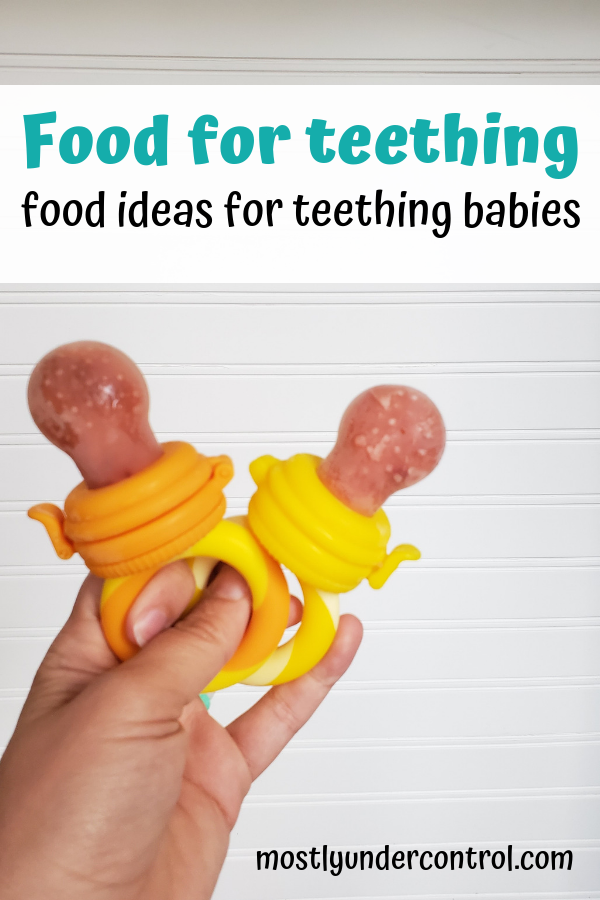 The timing and pace of teething is an individual process, which depends primarily on heredity, as well as on external factors, such as the quality of drinking water and the nature of nutrition. For the first 3-4 months, the baby is exclusively breastfed, and the baby does not need teeth yet. By the 4th month of life, the baby is already deficient in the nutrients of breast milk, the stage of the start of the introduction of complementary foods begins. At this age, many children begin to appear the first milk teeth. However, the timing of the onset of eruption can be shifted to the second half of life, this is also a variant of the norm. On average, by the 12th month of life, a child has 8 teeth and 20 by 2 years. nine0003
The timing and pace of teething is an individual process, which depends primarily on heredity, as well as on external factors, such as the quality of drinking water and the nature of nutrition. For the first 3-4 months, the baby is exclusively breastfed, and the baby does not need teeth yet. By the 4th month of life, the baby is already deficient in the nutrients of breast milk, the stage of the start of the introduction of complementary foods begins. At this age, many children begin to appear the first milk teeth. However, the timing of the onset of eruption can be shifted to the second half of life, this is also a variant of the norm. On average, by the 12th month of life, a child has 8 teeth and 20 by 2 years. nine0003
Health changes
The most common teething symptoms are increased salivation and itchy gums. During this period, the child pulls in his mouth and gnaws his own fingers and any objects that come across. In addition, the appearance of teeth is often accompanied by an increase in body temperature, changes in the stool and a decrease in appetite.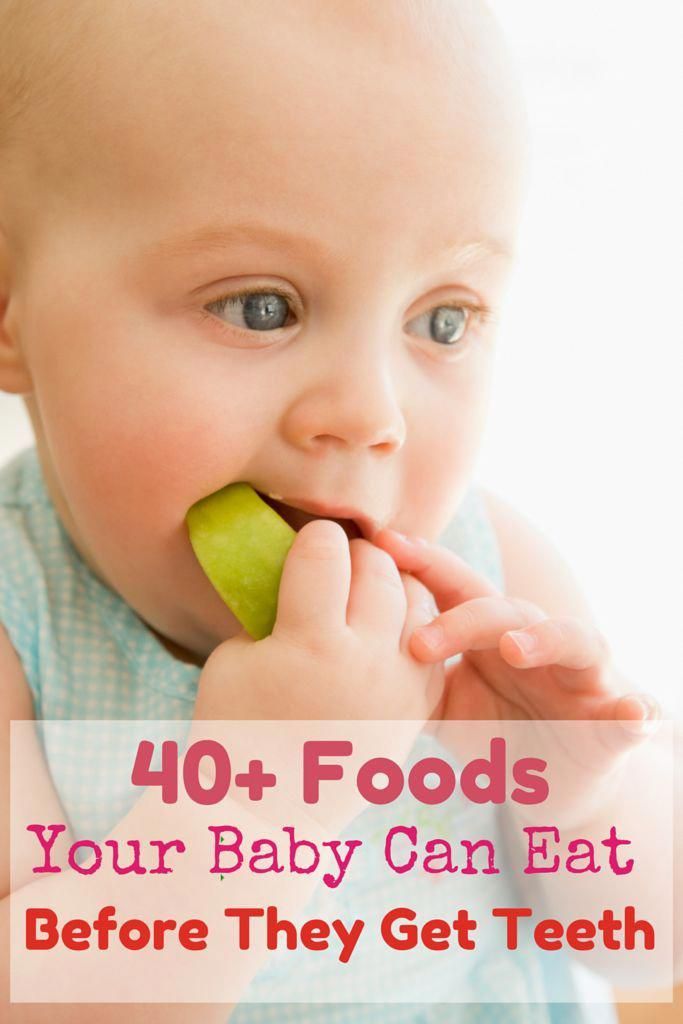 The temperature can be above 38 ° C and disturb the child for several days. To make sure that changes in the baby's health are associated with the appearance of milk teeth, carefully examine the child's oral cavity. On examination, you will find redness and swelling of the gums at the site of the new tooth, and the child will respond even to a slight pressure on this area. Against the background of teething, the immune defense of the baby is often reduced, which leads to the appearance of symptoms of a viral or bacterial infection. Therefore, changes in the state of health of the crumbs can only be indirectly associated with teething. In every ambiguous situation, do not neglect the advice of a pediatrician. nine0003
The temperature can be above 38 ° C and disturb the child for several days. To make sure that changes in the baby's health are associated with the appearance of milk teeth, carefully examine the child's oral cavity. On examination, you will find redness and swelling of the gums at the site of the new tooth, and the child will respond even to a slight pressure on this area. Against the background of teething, the immune defense of the baby is often reduced, which leads to the appearance of symptoms of a viral or bacterial infection. Therefore, changes in the state of health of the crumbs can only be indirectly associated with teething. In every ambiguous situation, do not neglect the advice of a pediatrician. nine0003
Refusal to eat
Teething in babies is often accompanied by eating disorders - children become selective in their choice of food, and often completely refuse food. Since the appearance of milk teeth is a long process, many parents of babies are concerned that during the period when teeth are being cut, the child does not eat almost anything.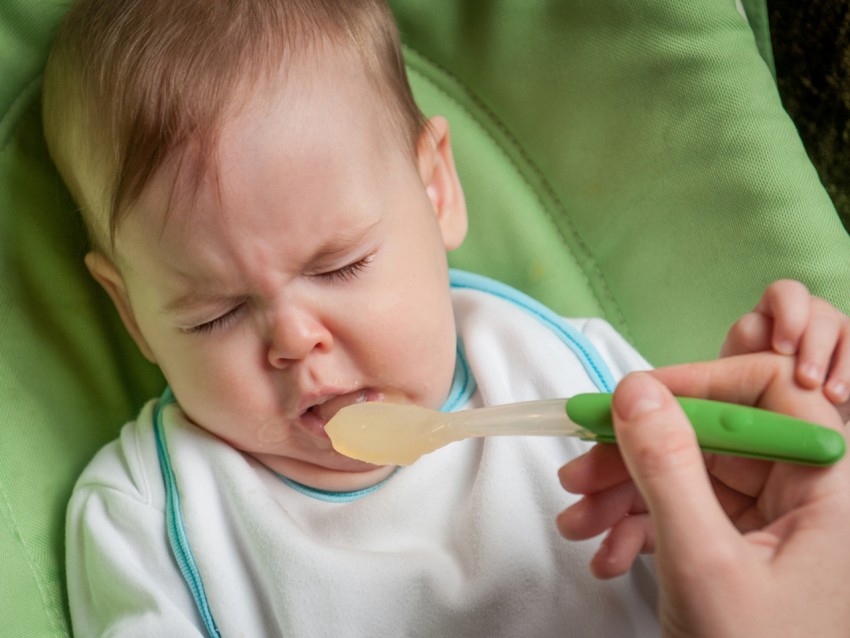 The contact of food with the gums increases pain, and the child does not perceive any food well. "How and what to feed the baby?" - this is the most topical issue for parents of infants in the first year of life. Try to follow the general recommendations during this period, as well as some practical tips to help keep the child from being hungry. nine0003
The contact of food with the gums increases pain, and the child does not perceive any food well. "How and what to feed the baby?" - this is the most topical issue for parents of infants in the first year of life. Try to follow the general recommendations during this period, as well as some practical tips to help keep the child from being hungry. nine0003
General rules
Despite the difficult situation, do not force-feed. Forced eating can provoke disruption of the digestive tract and be the cause of improper eating behavior in the future. During this period, it is better to adhere to a free feeding regime according to the principle - often, but in small portions. If the mother is breastfeeding, then expect the frequency of feedings to change. The child has a need for frequent application, not only to satisfy hunger, but also for emotional calm. In the acute phase, refuse to introduce complementary foods and choose foods that minimally irritate the oral mucosa. During this period, salivation is increased in babies, therefore, to restore the water balance, periodically offer the baby drinking water for babies, allowed from birth. The baby has a desire to gnaw and bite everything, but during this period it is better to refuse solid food as much as possible, since sharp edges can additionally injure the mucous membrane and only worsen the situation. Among complementary foods, the most optimal choice during teething are cereal complementary foods. nine0003
The baby has a desire to gnaw and bite everything, but during this period it is better to refuse solid food as much as possible, since sharp edges can additionally injure the mucous membrane and only worsen the situation. Among complementary foods, the most optimal choice during teething are cereal complementary foods. nine0003
Children's porridge
What are the advantages of choosing children's porridge as a priority in the baby's diet during the period of the appearance of milk teeth? Firstly, it is a highly nutritious product - the combination of milk and cereals meets the needs of the child for energy and nutrients, even with a relatively small amount of the finished product. Secondly, the appropriate consistency of commercially produced baby cereals facilitates the assimilation of complementary foods. Bebi Premium baby cereals for children over 4 months of age have a homogenized degree of grinding, which does not require additional gum grinding and reduces the load on the jaw apparatus.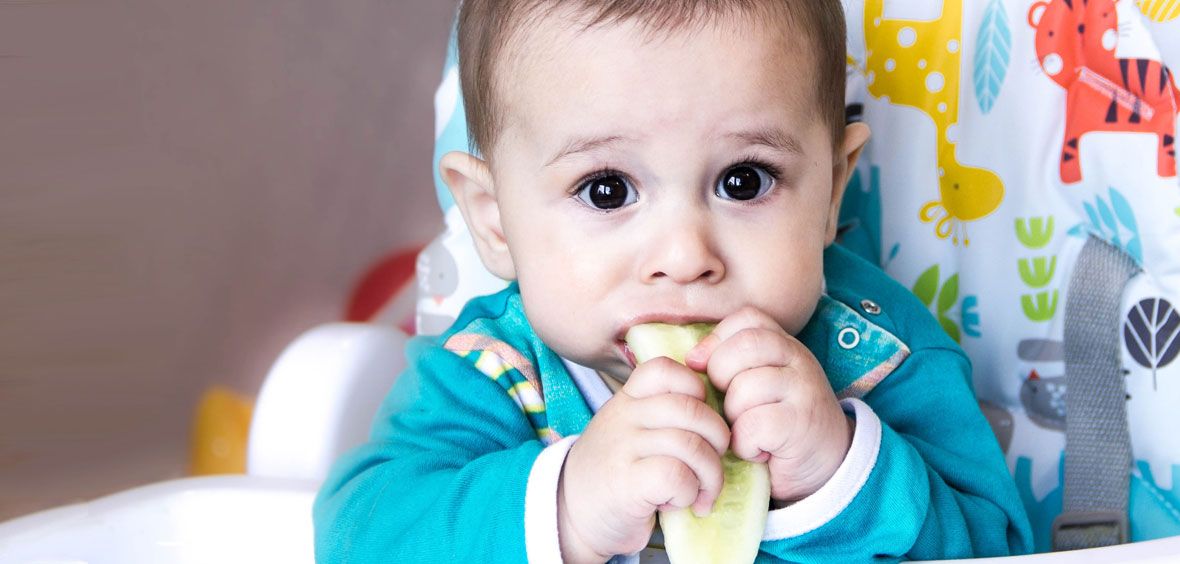 In addition, they are easily and without lumps diluted with water or breast milk at room temperature, which also reduces the severity of pain compared to warmer foods. Fruit and vegetable complementary foods, despite the appropriate puree-like structure, are rich in organic acids, which can be a source of irritation of the delicate mucous membrane of the baby's gums. During this period, another important advantage of the Bebi Premium line of children's cereals is the reduced sugar content. Sugar is a good breeding ground for microbes that live in the oral cavity, its excess intake can increase the inflammatory process in the gums. nine0003
In addition, they are easily and without lumps diluted with water or breast milk at room temperature, which also reduces the severity of pain compared to warmer foods. Fruit and vegetable complementary foods, despite the appropriate puree-like structure, are rich in organic acids, which can be a source of irritation of the delicate mucous membrane of the baby's gums. During this period, another important advantage of the Bebi Premium line of children's cereals is the reduced sugar content. Sugar is a good breeding ground for microbes that live in the oral cavity, its excess intake can increase the inflammatory process in the gums. nine0003
Practical advice
The pharmaceutical market offers a variety of topical gum pain relievers approved for use in children. However, it is recommended to use them very carefully and in consultation with the pediatrician in cases where pain significantly affects the condition of the crumbs. Be careful when using them, as swallowing the gel with painkillers can lead to severe toxic reactions.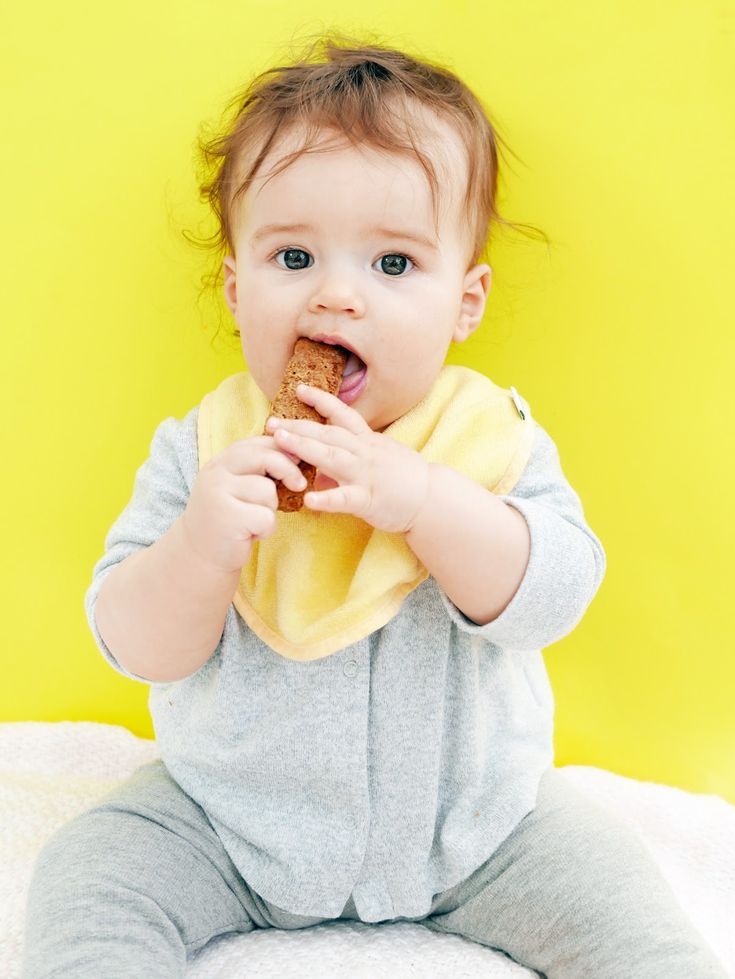 Safe aids are special teethers. Among them, the most effective are devices with a cooling gel or water inside. Offer the baby teethers before the next meal, and then he will eat complementary foods more calmly. Another simple and useful procedure is to massage the gums in the direction from the center to the corners of the mouth, avoiding impact on the eruption zone. Massage improves blood flow, activates growth processes and reduces tension in the gum area. Remember, teething is a natural physiological process, and the task of parents is to help the baby to overcome this difficult life stage as comfortably as possible. nine0003
Safe aids are special teethers. Among them, the most effective are devices with a cooling gel or water inside. Offer the baby teethers before the next meal, and then he will eat complementary foods more calmly. Another simple and useful procedure is to massage the gums in the direction from the center to the corners of the mouth, avoiding impact on the eruption zone. Massage improves blood flow, activates growth processes and reduces tension in the gum area. Remember, teething is a natural physiological process, and the task of parents is to help the baby to overcome this difficult life stage as comfortably as possible. nine0003
#When teething
Rate the article
(Number of votes: 14, average 4.7)
Share with friends:
How to feed a child during teething? – Kid's Republic Blog
Parents sometimes notice that their beloved child suddenly refuses the usual food, cries, is naughty.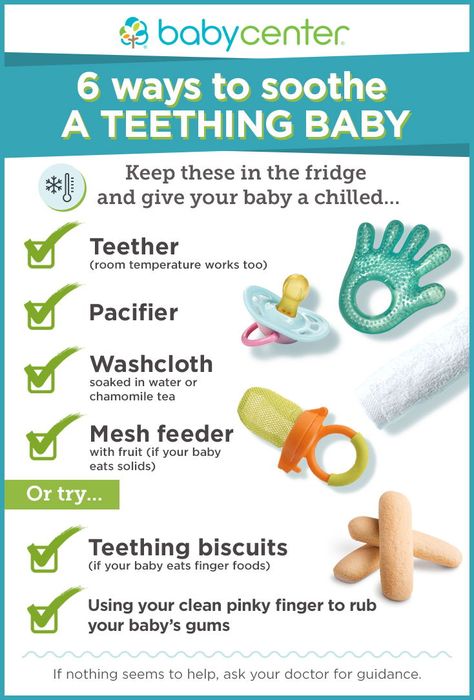 The reason for this behavior may be painful teething. How to feed a child during this difficult period, how to find out that his teeth have begun to appear and that they cause discomfort? nine0003
The reason for this behavior may be painful teething. How to feed a child during this difficult period, how to find out that his teeth have begun to appear and that they cause discomfort? nine0003
How can you tell if a child is teething?
The central teeth appear first in children. Usually they can be boasted as early as 6 months. But individual symptoms will be noticeable much earlier, two months before the onset of an important event. Most babies experience discomfort 3-4 days before teething. They completely disappear on the 4th day after the tooth comes out. By what signs to recognize teething in order to organize the proper nutrition of the baby? nine0003
- the child becomes very moody. He refuses to play his favorite games and often cries, even when he is in his mother's arms;
- produces much more saliva - so be sure to stock up on a change of bibs;
- baby can bite. To quickly alleviate this condition, let him gnaw on a special ring;
- your face or cheeks become red, like after a long run; nine0019 the temperature may rise;
- disturbed sleep pattern;
- no appetite.
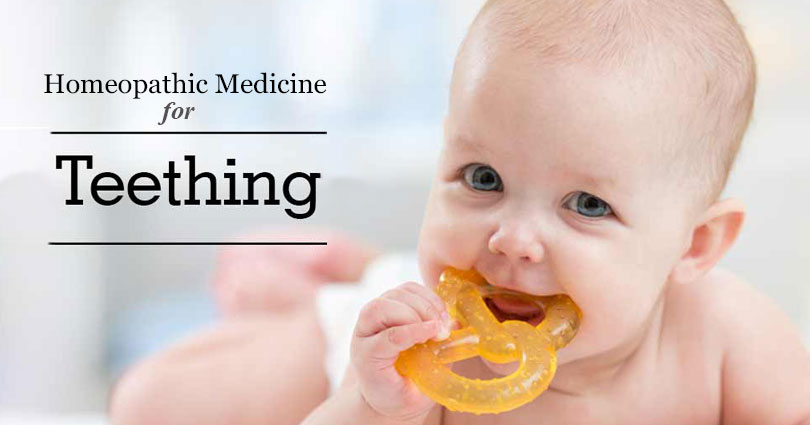
The exit of the first teeth is always the most painful. Therefore, it is so important to initially learn how to make the right children's menu for every day, which the baby can eat completely.
Proper nutrition for a baby with toothache
How to help a baby with no appetite due to pain? To make food enjoyable, use the following tips: nine0003
- never force anyone to finish what is left on the plate or in the bottle;
- Always opt for liquid meals that are easier to swallow. During this difficult period, ready-made organic fruit and vegetable purees produced by the French brand Good Gout will help you. They contain 99.9% natural, the most useful products for children. Soft, delicious puree of pumpkin, apples, pears, strawberries, mangoes, bananas with a drop of lemon juice will appeal to any picky eater. Ready-made liquid cereals from cereals "Strawberry Muesli", "Oats, Wheat, Rice" and other ingredients contain only organic flour, vitamins and nothing else; nine0020
- products are best served chilled.
 In this form, they will play the role of a light pain reliever. Invite your child to chew vegetable or fruit sticks from carrots, bananas, cucumbers;
In this form, they will play the role of a light pain reliever. Invite your child to chew vegetable or fruit sticks from carrots, bananas, cucumbers; - to create comfortable conditions, try to cook only your favorite dishes.
Diet for older children
The process of teething takes a long time, it usually ends by the age of three. What foods to choose for children from 1 to 3 years old if they are teething? Good Gout suggests using organic biscuit sets specially made to provide some relief from the pain of new teeth. Small squares with an incredible taste of mango, banana or coconut will become your fidgets' favorite dishes. nine0003
Assortment of children's eco products Good Gout. extremely large. Today, a child can try pasta with eggplant, tomatoes and cream, mini baguettes with cheese, rosemary and tomatoes, and tomorrow invite him to chew on delicious pea sticks or three types of crispy rice cakes with apple, carrot, blueberry. Organic nut, banana, almond, and round vanilla or oval cocoa cookies will relieve itchy gums and help make chewing less painful.


